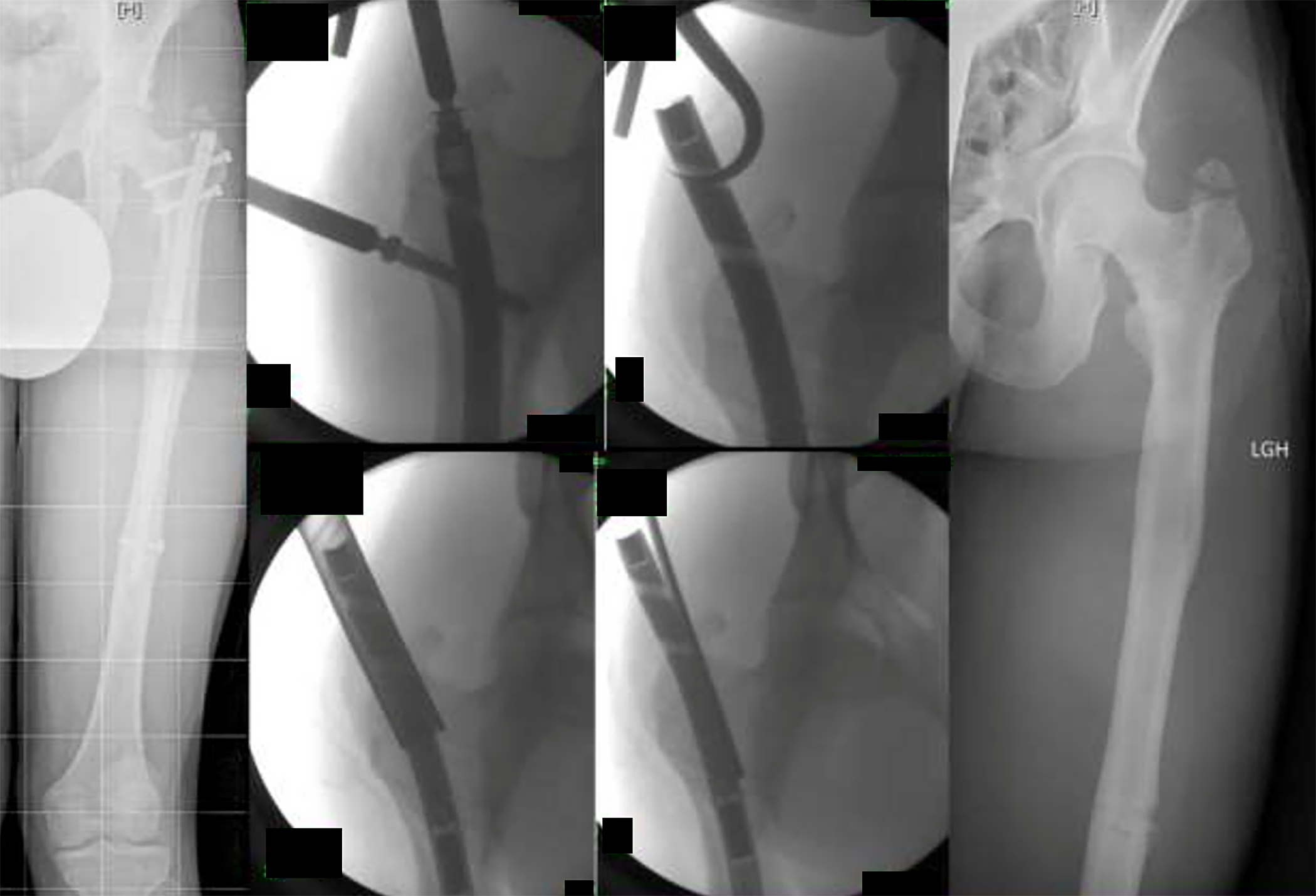In this post, Editor-in-Chief Dr. Marc Swiontkowski discusses the new JBJS study by Hlukha et al. on mechanical failures observed in magnetic intramedullary lengthening nails.
Limb lengthening for trauma-related conditions and congenital deformities has long been associated with high rates of complications. This is related to the fact that slow distraction, in the range of 1 millimeter per day, is associated with the best native growth around the osteotomized segment. In turn, this translates to long periods of mechanical loading of the internal or external fixation device.
The introduction of intramedullary lengthening devices represented an advance over external frames in terms of patient comfort and satisfaction while also producing a favorable impact on pin-track infection. Initially, intramedullary lengthening nails were mechanical in design, with a ratcheting mechanism that required manipulating the patient’s leg in internal and external rotation through an arc of 30 to 40 degrees. Not every patient was able to tolerate a family member performing these daily manipulations, resulting in a large number of failed lengthenings. The motorized nail designs available in more recent years have addressed this issue. Nonetheless, the complex engineering required naturally results in expensive implants. In addition, careful patient selection remains critical to the success of these lengthening procedures.
In the January 18, 2023 issue of JBJS, Hlukha et al. detail their experience with a cohort of 377 patients (420 limbs) who underwent limb lengthening with magnetic intramedullary lengthening nails (MILNs). Their aim was to assess the rate of mechanical failures, the types of failures, and management strategies.
Mechanical Failures in Magnetic Intramedullary Lengthening Nails
- The researchers performed a retrospective review of medical records from 2012 through 2021. Included were patients who underwent limb lengthening by 3 surgeons at a single center using a titanium Precice MILN (either earlier or redesigned versions) with ≥12-month follow-up. They excluded cases using the Precice Stryde nail, which was taken off the market in 2021. The mean age of the patients was 24 years.
- The investigators noted favorable outcomes overall but found a mechanical failure rate of 9.5%, or 40 nails. The mechanical failure rate for the earlier-design nails was 11.3% (11 of 97 nails) and for those with a newer design, 9% (29 of 323 nails). The limb-lengthening goal was ultimately achieved for 90% of the cases with mechanical failure. Most of these cases were addressed with an additional surgical procedure.
The authors detail the different types of failure observed as well as the phase in which it occurred (insertion, lengthening, consolidation, extraction) and possible causes of failure. In addition to the specific nail-related problems identified, noncompliance with weight-bearing was noted as a possible cause in some cases.
While a lower overall rate of mechanical failure was seen for the redesigned nails, it was not substantially lower. The findings of this study underscore the need to consider the high mechanical forces and long period of function that may be placed on these devices. We will likely see further engineering advances, but surgeons, patients, and their families need to spend adequate time discussing potential failure mechanisms and expectations when planning limb-lengthening procedures.
Access the full report at JBJS.org.
JBJS Editor-in-Chief




